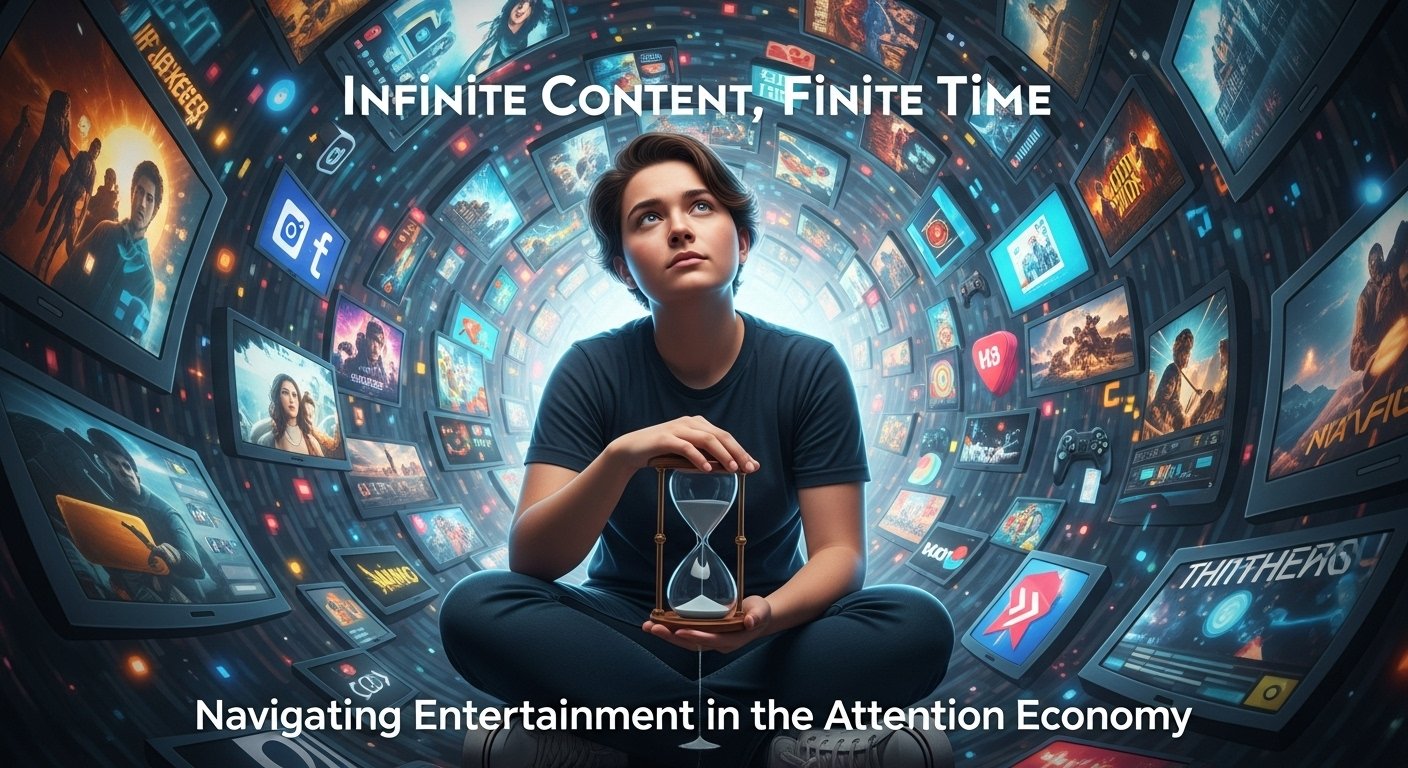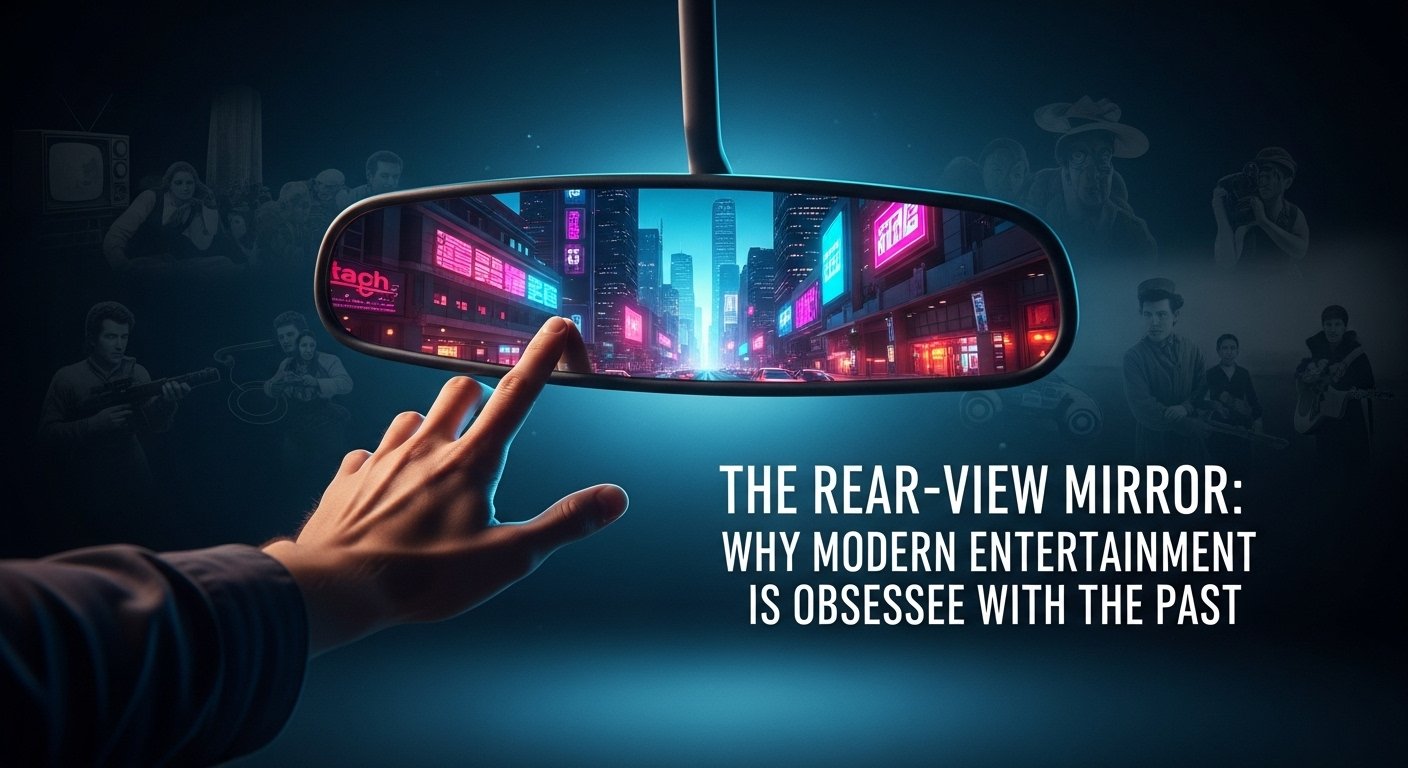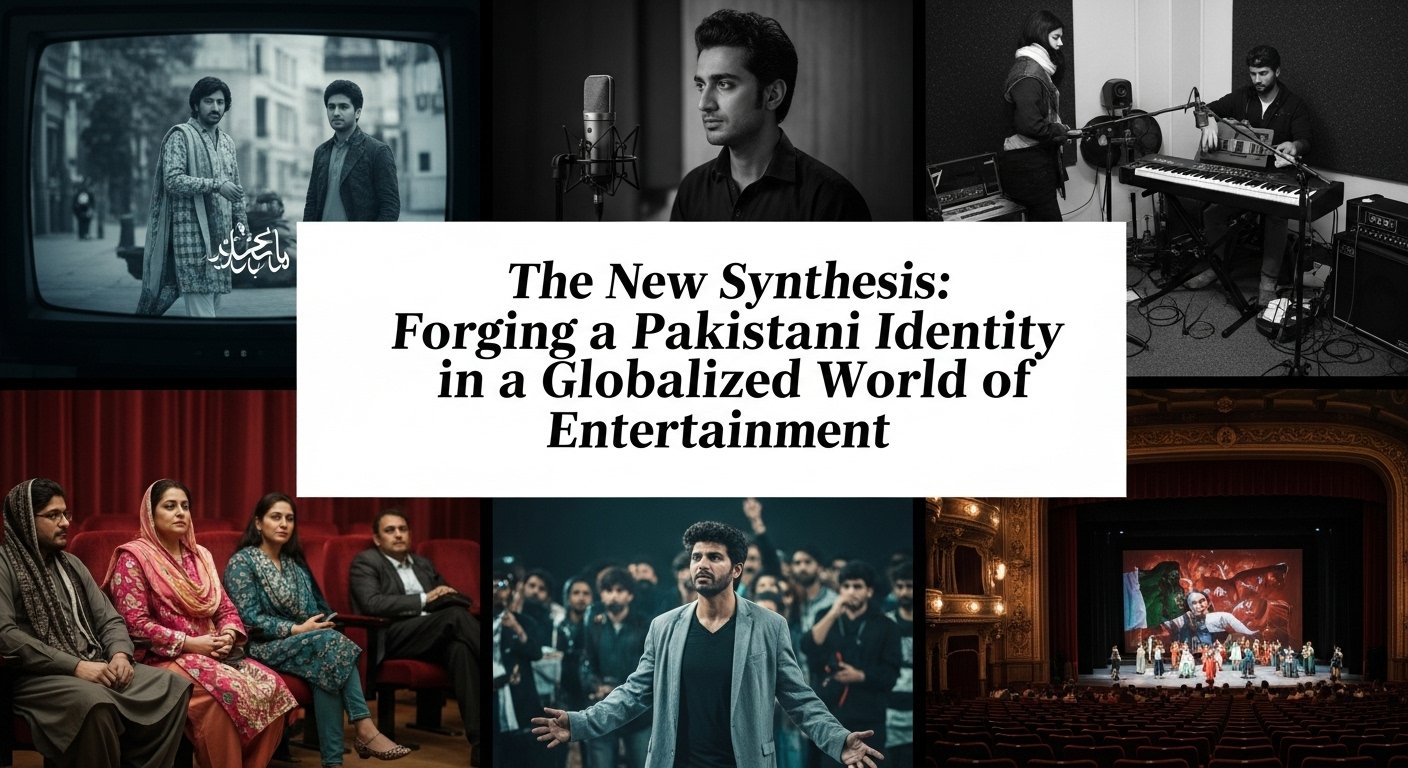In the quiet moments of life—on a commute, waiting in a line, or unwinding after a long day—a familiar ritual unfolds across the globe. A screen lights up, and with a flick of a thumb, a universe of entertainment presents itself. We scroll through an endless feed of video clips, browse a streaming service library with thousands of films, or sift through millions of songs. We live in an age of unprecedented creative abundance. Yet, this infinity of choice often produces a distinctly modern form of anxiety. This is the central paradox of entertainment in 2025. The industry is no longer defined simply by the quality of its content, but by a fierce, technologically supercharged war for a single, finite, and invaluable resource: our attention.
This new paradigm, the “attention economy,” has fundamentally reshaped how entertainment is created, distributed, and consumed. It has transformed us from a passive audience into users whose engagement is the ultimate currency, altering our culture and our own minds in the process.
The Infinite Shelf and the Algorithmic Gatekeeper
To understand the shift, one must look back at the old world of entertainment, a world defined by scarcity. There were a limited number of television channels, a finite schedule of programming, and a physical limit to the number of films in a video store or albums in a record shop. Gatekeepers—studio executives, publishers, and broadcasters—decided what the public would see.
Today, the dominant model is the “infinite shelf.” A single streaming platform offers more content than a person could consume in a thousand lifetimes. While this appears to be a consumer paradise, it introduces the psychological strain known as the “paradox of choice.” Overwhelmed by limitless options, we often struggle to make a decision at all, leading to frustration and fatigue.
Into this breach steps the new, non-human gatekeeper: the algorithm. The recommendation engine is the most powerful force in modern entertainment. Its primary function is to solve the paradox of choice by personalizing the infinite shelf for each individual user. It analyzes our past viewing habits, our likes, our dislikes, the time of day we watch, and countless other data points to predict what we want to see next. It is the invisible curator that dictates the cultural landscape for billions.
The Science of Engagement: Engineering for Attention
In the attention economy, the primary goal of a platform is not necessarily to sell a single product, but to maximize the time a user spends within its ecosystem. This “time-on-platform” is the asset that is monetized, either through advertising, justifying a monthly subscription fee, or gathering data to refine future predictions. The value of a user to a platform can be conceptually understood as:
Vuser≈(Tengage×Ddata)×Ppredictive
Where the User Value (Vuser) is a function of their Engagement Time (Tengage) and the Data (Ddata) they generate, which is then amplified by its Predictive Power (Ppredictive) to influence future consumption.
To maximize this value, platforms have developed a sophisticated toolkit designed to capture and hold our focus. Autoplay seamlessly rolls from one episode or video to the next, removing the natural pause where a user might choose to disengage. Personalized recommendation feeds, like the “For You” pages of social media, create an endless stream of content tailored to our established tastes. This system employs the principle of variable rewards; because we don’t know if the next video will be mildly amusing or incredibly entertaining, we keep scrolling in anticipation of the next “win,” a mechanism similar to that of a slot machine. The explosion of short-form content is the apotheosis of this trend, delivering rapid, successive, and highly engaging stimuli that make it difficult to look away.
The Creator on the Algorithmic Treadmill
This new economy has profound consequences for creators. While the internet has democratized content creation, allowing anyone with a camera and an idea to find an audience, it has also placed them on an “algorithmic treadmill.” To remain relevant and visible, creators feel immense pressure to constantly produce content that “feeds the algorithm.” This often means optimizing for what the platform favors: longer watch times, high engagement rates, and adherence to trending formats.
Success becomes a game of analytics. Creators must meticulously study their metrics, A/B test thumbnails and titles, and pivot their content strategy based on what the data tells them is working. This can lead to a feedback loop where sensationalism, clickbait, and controversy are rewarded over nuance, originality, and artistic risk. The relentless demand for constant output has also led to a widely reported crisis of burnout among professional online creators, who find themselves unable to step away for fear of being punished by the unforgiving algorithm.
The Consumer’s Dilemma: Drowning in the Stream
For the consumer, the attention economy presents its own set of challenges. The hyper-personalization of algorithmic feeds, while convenient, can trap us within a “filter bubble.” By consistently showing us content similar to what we already like, the algorithm can inadvertently insulate us from different perspectives, genres, and ideas, narrowing our cultural and intellectual horizons.
There is also a growing concern about the cognitive impact of our media diet. A constant stream of short-form, instantly gratifying content trains our brains to expect novelty and rapid stimulation. This may be eroding our collective patience for “deep engagement”—the ability to concentrate for extended periods on a single, complex piece of information, such as reading a dense book or appreciating a slow-paced, atmospheric film.
In response, a movement towards “digital mindfulness” is gaining traction. Consumers are becoming more aware of the systems designed to capture their attention and are actively seeking ways to regain control. This includes using screen-time limiters, consciously curating subscription feeds, unsubscribing from distracting notifications, and making deliberate choices to engage with long-form content outside of algorithmically driven platforms.
Conclusion: The New Media Literacy
The entertainment landscape of 2025 is a marvel of technological achievement, offering a universe of content at our fingertips. Yet, it is an environment built on a foundation of fierce competition for our cognitive resources. This has resulted in incredible personalization and access, but also in significant psychological and cultural side effects that we are only beginning to understand.
In this new world, media literacy has evolved. It is no longer enough to critically analyze the message within a piece of content. We must now also understand the system that delivered that content to us—the economic incentives, the algorithmic biases, and the psychological techniques at play. Our attention is the most valuable currency we possess. In an economy that seeks to endlessly mine it, the most powerful and rebellious act is to be intentional with where and how we choose to spend it. It is, after all, the resource with which we construct our inner world.



